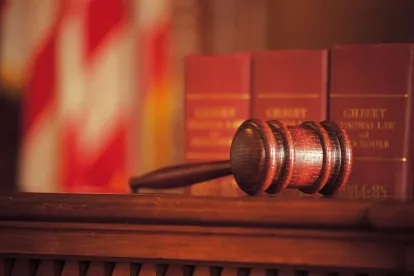Holding
In Chemours Company FC, LLC v. Daikin Industries, Ltd., Nos. 20-1289, -1290 (Fed. Cir. July 22, 2021), a CAFC panel held that the PTAB (“Board”) erred when it found no nexus existed between the claimed invention and evidence of alleged commercial success because the Board only considered the claim features separately and failed to consider that it was the “unique combination” of the claimed features that accounted for the commercial success.
Background
To accord substantial weight to evidence of objective indicia of nonobviousness, such as commercial success, the evidence must have a “nexus” to the claimed invention. Id. at *12. Put another way, once it is shown that there is a legally and factually sufficient connection between the evidence and the patented invention, it may be presumed that the commercial success of the product is attributed to the patented invention. Id. at *13. This presumption, however, is rebuttable, and a patent challenger may respond by presenting evidence that shows the proffered evidence was due to extraneous factors other than the patented invention. Such evidence may include, for example, demonstrating the commercial success is due to unclaimed feature(s) or feature(s) known in the prior art.[1]
In Chemours, the Board evaluated whether commercial success evidence proffered by Chemours exhibited the required nexus to the claimed invention. Relying on Daikin’s rebuttal that a nexus was lacking because each of the features of the claimed invention could be found in the prior art, the Board concluded that a nexus did not exist. In particular, the Board found that all the features of the claimed invention could be found in a single prior art reference except one, which remaining feature was disclosed in other prior art of record. Id. at *12.
Federal Circuit Decision
The CAFC unanimously reversed, finding that, “[c]ontrary to the Board’s decision, the separate disclosure of individual limitations, where the invention is a unique combination of three interdependent properties, does not negate a nexus.” Id. The CAFC further reasoned that “[c]oncluding otherwise would mean that nexus could never exist where the claimed invention is a unique combination of known elements from the prior art.” Id. at *12-13. The CAFC also noted that “market share data, though potentially useful, is not required to show commercial success.” Id. at *13.
Stacy Lewis, a Law Clerk at Finnegan, contributed to this article.
Take Aways
Patentees should consider relying on the Chemours decision when presenting objective indicia of nonobviousness, such as commercial success, particularly in situations where each of the individual elements of the claimed invention may be known in the prior art, but it may nonetheless be argued that it is the “unique combination” of the claim elements that provides the basis for the commercial success.
Practitioners are also reminded that nexus should not be taken lightly. For an examiner, the PTAB, or a court to credit such objective evidence, the applicant must overcome any argument that there is no nexus between the evidence and the merits of the claimed invention.[2]This nexus between the evidence and the claimed invention “is a legally and factually sufficient connection.”[3]The merits of the claimed invention must be shown to be responsible for the objective evidence of nonobviousness. Commercial success, for example, attributable to marketing efforts does not provide nexus between the objective evidence and the merits of the claimed invention.[4] The objective evidence must also be commensurate in scope with the claims.[5]
Submission of objective evidence requires careful thought and planning. Do not throw a declaration together in haste leading to harmful mistakes that might even give rise to an allegation of inequitable conduct based on, for example, affirmative egregious misconduct in violation of the duty of candor (Rule 56). Also, declarations may create prosecution history estoppel, as well as an undesired or overly narrow claim construction.
[1]See https://www.finnegan.com/en/insights/blogs/federal-circuit-ip/presumption-of-nexus-improper-when-product-includes-features-not-claimed-in-the-patent.html
[2] MPEP § 716.01(b). See also, https://www.uspto.gov/patents/ptab/precedential-informative-decisions
[3]Demaco Corp. v. F. Von Langsdorff Licensing Ltd., 851 F.2d 1387, 1392 (Fed. Cir. 1988).
[4]MPEP § 2145
[5]MPEP § 716; Allergan, Inc. v. Apotex Inc., 754 F.3d 952, 965 (Fed. Cir. 2014); Polaris Indus. v. Arctic Cat, Inc., 882 F.3d 1056, 1072 (Fed. Cir. 2018).




 />i
/>i

